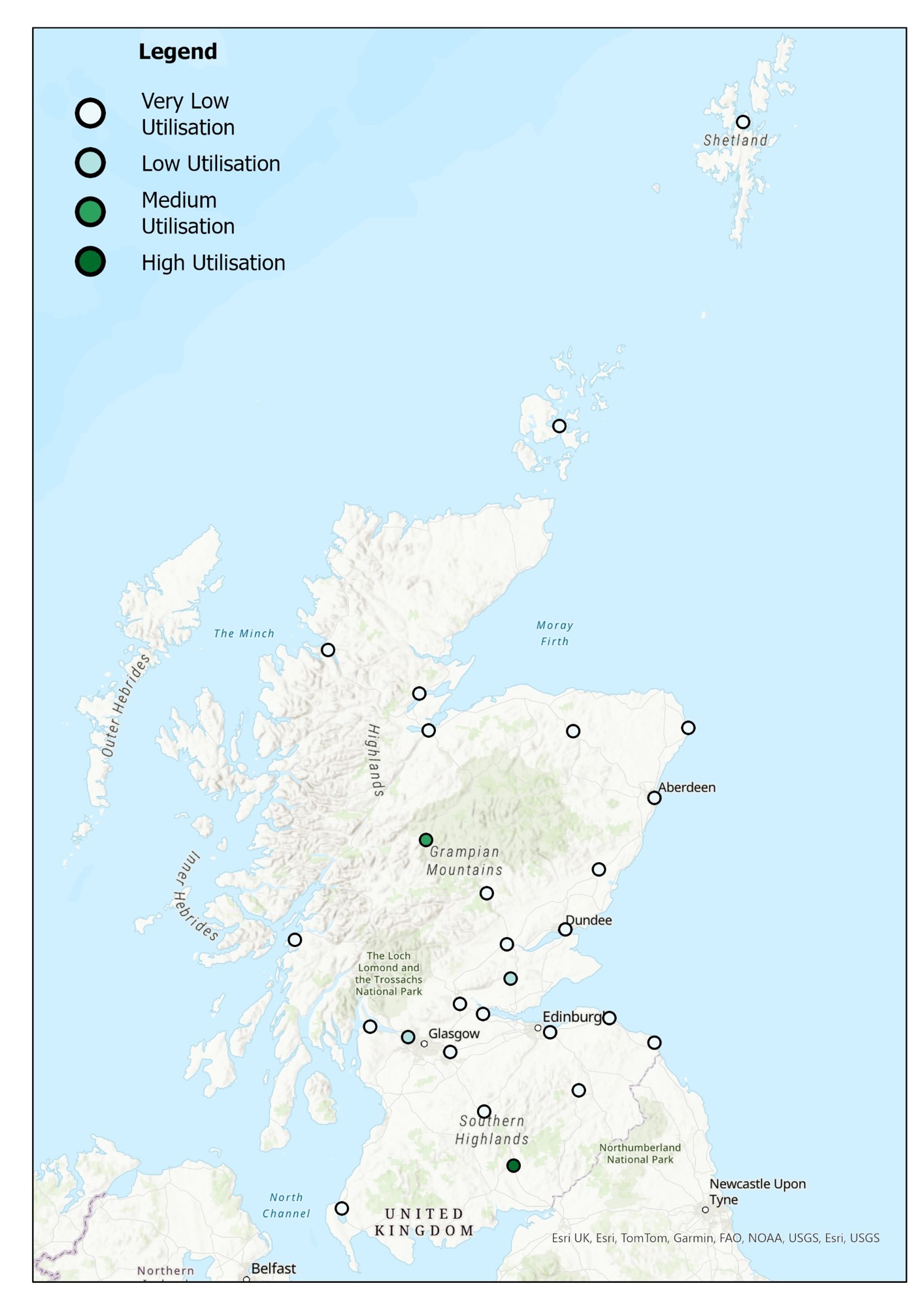Hydrogen Vehicles
Refuelling Locations
All routes were similarly modelled as if all fleet vehicles were hydrogen (FCEV). There is no clear evidence on future intentions of fleets which would enable an alternative ratio to be used. As BEVs are already in use on UK roads, the volumes of hydrogen required will likely be much lower than reflected in the tables below.
Heavy Usage Corridors
Analysis revealed heavy usage of hydrogen refuelling stations along the A90 (Perth-Aberdeen) and M74 (Glasgow-Carlisle) corridors, which serve as major arteries for freight movement.
Central Belt Usage
The model also identified potential for hydrogen refuelling stations within the central belt, although to a lesser extent.
Lighter Usage on A9
The model currently predicts lighter usage along the A9. This difference is likely a result of the specific operations of the few fleets in our dataset and may change with additional fleet data.
There are practical complexities associated with identifying sites for hydrogen refuelling relating to the potential need to site refuelling stations close to hydrogen production.
There is no infrastructure currently available to move hydrogen at scale, for example pipelines which may shape refuelling locations. While there are many proposed hydrogen production projects, the majority are not yet under construction. Locations identified here must be seen as speculative (view Figure 5).
| Location | Number of uses (annual) | Total hydrogen delivered (kg) |
|---|---|---|
| Dalwhinnie | 6205 | 140,722 |
| Annandale Water | 6166 | 290,291 |
| Kinross | 1675 | 46,780 |
| Clydebank | 631 | 18,651 |
| Broxden | 197 | 9,034 |
| Ballinluig | 155 | 8,502 |
| Abington | 133 | 5,658 |
| Stirling | 98 | 2,972 |
| Stracathro | 79 | 2,504 |
| Dundee Port | 64 | 2,040 |
Research indicates that there is also significant energy loss in the production of green hydrogen; it takes 2-3x more electricity to make hydrogen than using electricity directly to power vehicles. Infrastructure costs for the production, storage and transportation of hydrogen are currently 1.5-2x higher than BEV rapid charging stations. Hydrogen can be produced locally, piped (not considered here) or requires specialised tube trailers to transport and sophisticated equipment for compressing, storing and dispensing safely. Sources (6-8) are listed in the bibliography.
